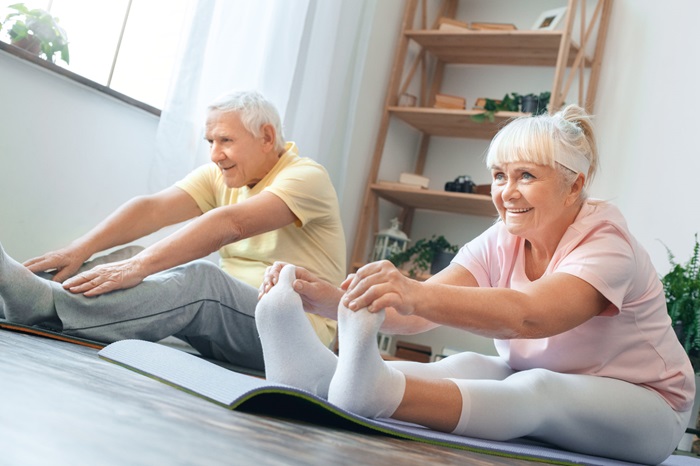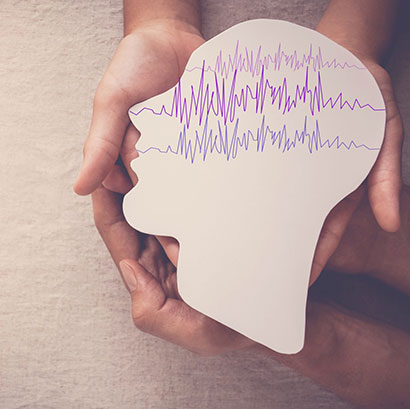How Seniors Can Increase Hip Strength and Flexibility

September 07, 2021
Having strength and flexibility in our hips is important for us all, but as we age, it becomes even more so. A lack of strength can increase the risk of falling and cause a hip fracture, which is a serious concern for seniors, as well as make day-to-day activities more challenging.
As we get older, our bones become weaker. That’s a normal part of aging. But it means that a senior can more easily break a bone than somebody who is younger. Considering that hip fractures are a big cause of morbidity and mortality in older adults, that’s not good news.
The good news is that you can improve strength and flexibility in your hips, core and legs, which can help protect you from falls and fractures, or increase the likelihood of regaining as much mobility as possible if you do break your hip.
Stretch and Strengthen
Both stretching and strengthening exercises are important. Stretching your muscles helps improve your range of motion and prevent injury. Strengthening exercises help keep your hip joint stable, which can relieve pain and prevent injury.
Here the sequence that the American Academy of Orthopaedic Surgeons recommends:
- Spend five minutes warming up with a low-impact activity like walking.
- Next, do your stretching exercises.
- Follow up with strengthening exercises.
- Finish with stretching exercises again.
“Do this every day. Make it part of your routine: Wake up in the morning, have your coffee and then do your exercises,” says Stephen Rossman, D.O., orthopedic surgeon at Hackensack University Medical Center and Palisades Medical Center.
As well, add in more low-impact activities to your day. Walking, riding a stationary bike or swimming are easy on the joints, safe and very effective in increasing strength and flexibility. “Something as simple as going on a daily walk for 20-30 minutes can help maintain cardiovascular and muscular health,” Dr. Rossman says.
Sample Exercises
Stretching: Simple leg lift
- Lie on the floor with both of your knees bent.
- Lift one leg off the floor, bending your knee and bringing it toward your chest.
- Straighten that leg and gently pull it toward your head until you feel tension behind your leg.
- Hold this position for 30 to 60 seconds.
- Relax for another 30 seconds before repeating this exercise with your other leg.
- Repeat four times.
Strengthening: Lying hip abduction
- Lie on the floor on your side with your top leg straight and your bottom leg bent.
- Slowly raise your top leg to 45 degrees.
- Keep your leg in this position for five seconds.
- Slowly lower your leg and relax it for a couple of seconds.
- Repeat eight times, then change sides to strengthen the other leg.
Don’t Ignore Pain
There are times when a visit to your doctor or orthopedic hip surgeon may be warranted. If you experience pain, don’t ignore it.
Common types of pain related to the hip are:
- Groin pain, which can be sign of arthritis in the hip
- Pain along the bone on the side of the hip
- Pain down the leg, which may be a sign of sciatic or nerve compression originating from the back
Most pain does not require surgery; many causes of pain can be treated with stretching and strengthening exercises. But if you have pain that doesn’t go away, it’s important for it to be investigated by a medical professional. “These should be the most enjoyable times of your life, and you should not have to live in pain,” says Dr. Rossman.
The material provided through HealthU is intended to be used as general information only and should not replace the advice of your physician. Always consult your physician for individual care.
Find a doctor near me
All About Thyroid Cancer

Understand thyroid cancer. Learn about symptoms, detection, and treatment options from leading doctors. Schedule an appointment today.
Overcoming Quarantine Anxiety

If you are feeling anxious or burnt out from COVID-related stress and isolation, you aren’t alone.
Find a doctor near me

What Is Frozen Shoulder, and Can You Prevent It?
Pain that makes you hesitate to use your shoulder may be a sign of a condition known as frozen shoulder.

Five Tips for a Healthier Workout
Three of our cardiologists share how to fit heart healthy exercise into even the busiest schedules.

How to Care for a Child With a Seizure Disorder
Learn how to care for a child with a seizure disorder. Dr. Sultan offers expert advice on medication, seizure safety, and triggers. Help your child thrive.

Is Keto Bad for Your Heart?
Is Keto Bad for Your Heart? Learn about potential risks and benefits from Drs. Dougherty & Hollywood. Get expert advice; call 800-822-8905.
